In order to get to Santa Cruz, I flew via Cochabamba and both flights went well. Before parting from the Durans at the airport in La Paz, Gustavo told me that a few days before he had called Felipe, his friend who lived in Santa Cruz, and had mentioned to him that I would be coming there one of those days, but he could not tell him exactly when. That was why before we separated, he gave me Felipe’s phone number and told me to give him a call from the airport.
By then I had already become accustomed to their spontaneous expressions of kindness and readiness to help, so I did as I was instructed. After my arrival, I called Felipe from the airport, explained to him where I was and said I would take a mini-bus to the centre, but I didn’t know where exactly it would leave me. Felipe told me to stay where I was and he would come to collect me. These people here were truly indescribably amazing!
Thus, Felipe fetched me and then we went to his home where we chatted until 2 am! The next day I slept slightly longer, but when I got up I also met uncle Mario (Felipe’s dad) and we all had breakfast together. Afterwards the three of us went to the centre of the city to have a walk there.
Santa Cruz is situated in the tropical part of Bolivia. This entire region is predominantly flat and it is the rich part of the country. There is oil and gas, along with the production of soybeans and other crops. Because of the huge discrepancy in wealth and economic development, these tropical, east parts of Bolivia want to secede from the mountainous, poorer parts. In popular culture, this area is important because it was precisely in this department, some 300 km from Santa Cruz, in the village of La Higuera, that Che Guevara was killed.
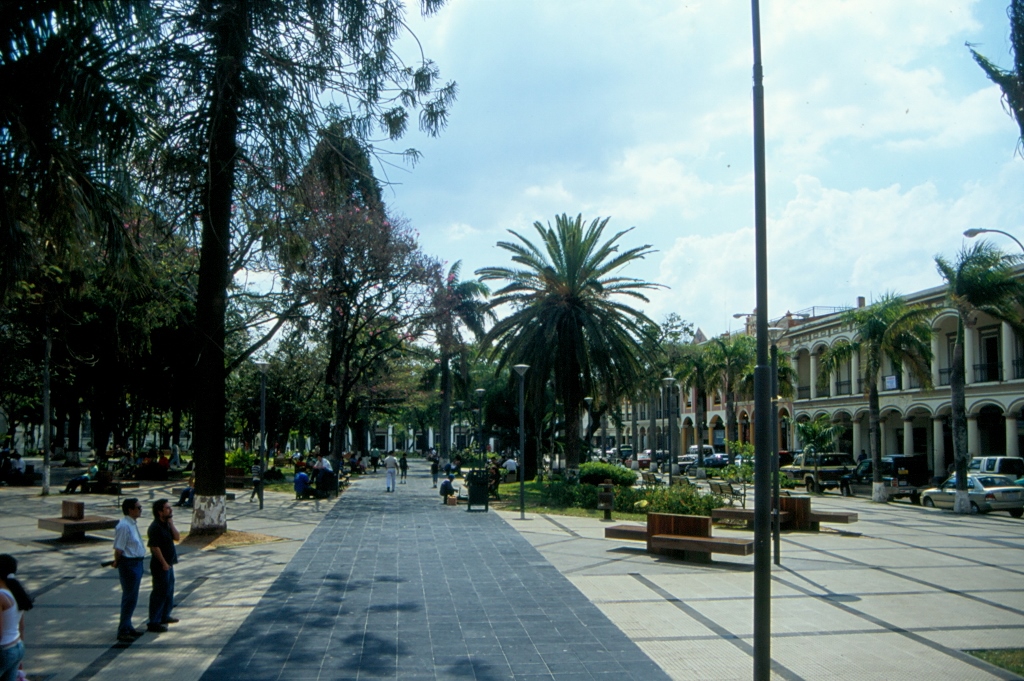 Plaza 24 de Septiembre, Santa Cruz
Plaza 24 de Septiembre, Santa Cruz
With my hosts I went to the river Piray and the recreational area that is in its proximity where we also had lunch. The broad riverbed of the Piray was mostly dry, barren and only a narrow stream of water flowed along it, but I was told that some time in the 1980’s it flooded over a half of Santa Cruz. I thoroughly enjoyed my company, but was also glad when we went back home for the afternoon rest.
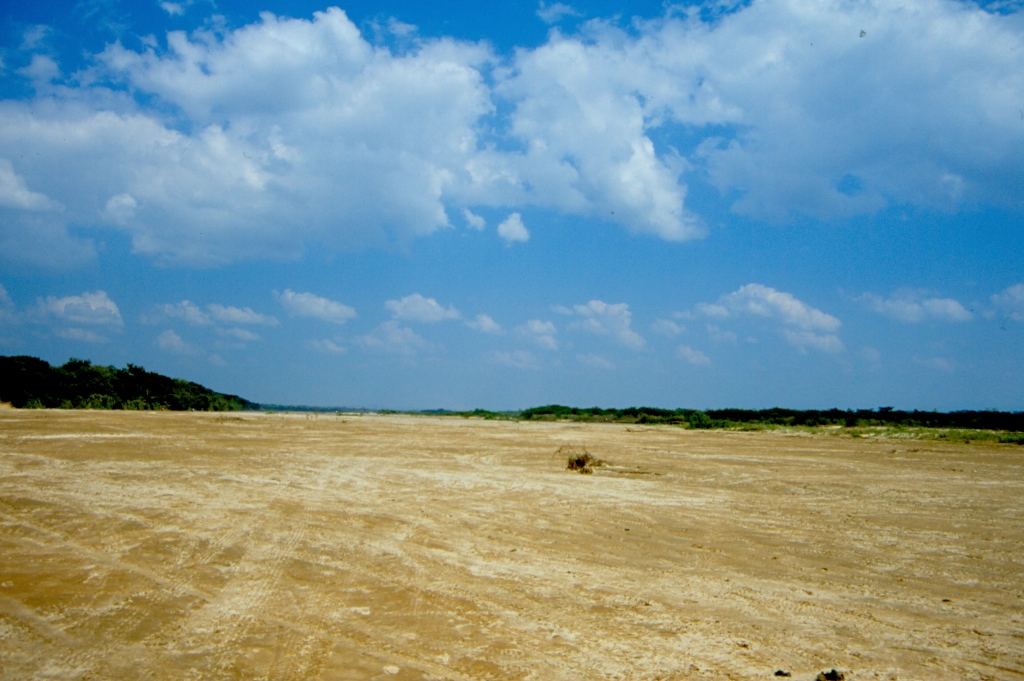 Riverbed of the Piray, Santa Cruz
Riverbed of the Piray, Santa Cruz
Afterwards, Felipe and I went to the zoo recommended to me by Virginia from Lima. There were a lot of Latin American animals and it was all interesting to see, provided one loves to see animals behind bars or wires. I was particularly happy to see jaguars and they were really beautiful, but I was appalled when I saw how visitors fed the animals at large. They offered them not only popcorns and other inappropriate food, but also plastic glasses and bottles with some chemical bright pink juice. Horrible!
Following the visit to the zoo, we went back home and first we watched an excellent Brazilian film. After that, Felipe and I started to chat again, but this time only until midnight! It was interesting that he told me he knew Gustavo from school when Felipe lived in La Paz. Felipe and his father are from Chile and when uncle Mario got a job in La Paz, Felipe followed him there as a child and everything went well at the time. Later they moved to Santa Cruz and that’s when Felipe started to have health problems when going to high altitudes, so he actually avoided it. He told me that it is only the third generation living at high altitudes that becomes fully acclimatized to living under these specific conditions.
The next day I got up early in order to go to Samaipata and El Fuerte. First I took a taxi to get to the point from which trufis leave for Samaipata. By the way, a trufi is the local name for line taxi. These group taxis cover the distance of some 150 km at a very low price (it was a little over 3 USD per person), but one needs to wait until the car is full, meaning 4 passengers. As I was unfamiliar with the local customs, I first sat and waited patiently, but after a while I gave up the waiting and offered to pay for the missing person, which meant that I had to pay some 6 and a half dollars for a 150 km ride.
The landscapes we went through were very pretty. As opposed to those at high altitudes from which I came down, there were lots of trees here. Still, what has kept in my memory the most from this ride is the car itself. I sat in the back, behind the driver, and as I looked to the front I realized after a while that there was something wrong there. I looked more closely and then I realized what it was – everything was reverse! The complete dashboard was on the side of the passenger seat. When I leaned over the driver’s shoulder, I saw that there was no control panel in front of him and the steering wheel was placed over some metal bar sticking from the vehicle floor. I voiced my puzzlement and then it was explained to me that they import second-hand, cheap cars from Japan, but as cars are driven on the left-hand side in Japan everything in the car is adapted appropriately. When the vehicles are brought to Bolivia, they simply leave the dashboard where it is, on the right-hand side, and move the pedals and the steering wheel to the left-hand side where the driver seat is.
The trufi brought me to the town of Samaipata, but my true destination was the archaeological site El Fuerte. It is interesting that a local taxi charged me more to take me to El Fuerte which was less than 10 km away than what I paid to the trufi driver for two people!
El Fuerte means a fortress in Spanish. It is in fact a rock, an exposed top of a hill. It is the only one of the surrounding hills that has this stone “bald patch.” If looked from above, the rock is around 160 m by 40 m. It is not known at all which pre-Inca civilization used this site as its sacred ground, but the rock is completely carved and covered in reliefs. There are geometric patterns, stairs, terraces and niches, as well as two completely parallel lines on the very top.
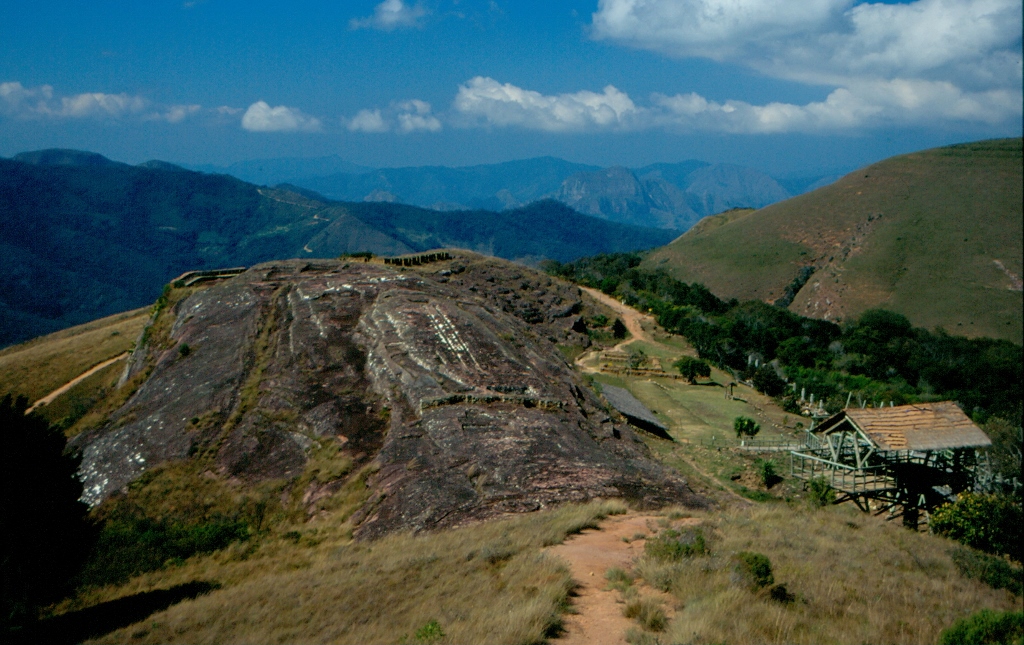 El Fuerte
El Fuerte
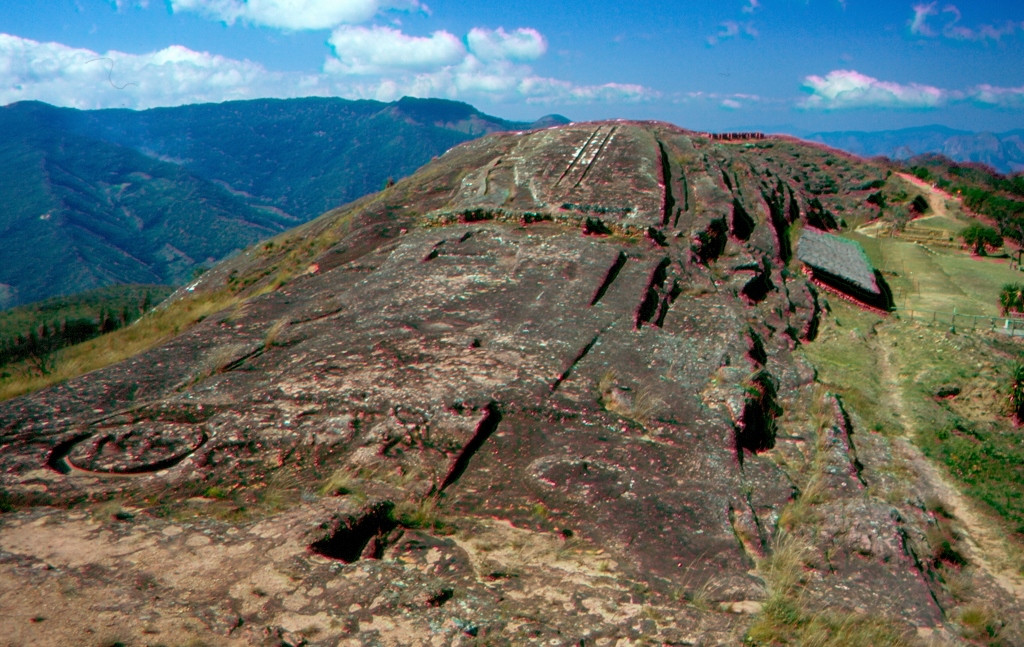 El Fuerte
El Fuerte
Since here, like in a number of other places I visited during my journey, it is not known what it was realistically all about, there is a theory that this was the landing strip for UFOs. Taking into consideration how truly unusual this place is, it does appear as if not from this planet. Afterwards the Inca came to this area for a short while and worked some more on the rock, but this did not contribute to any additional clarification about the place. There are reliefs of pumas, jaguars, snakes and other animals. There are terraces for sitting, carved-in stairs and trapezoid niches, typical of the Incas. It is supposed that the niches used to be used for placing idols in them – mummified remains of important dignitaries, such as rulers and priests. These niches are located at the lower end, around the rock.
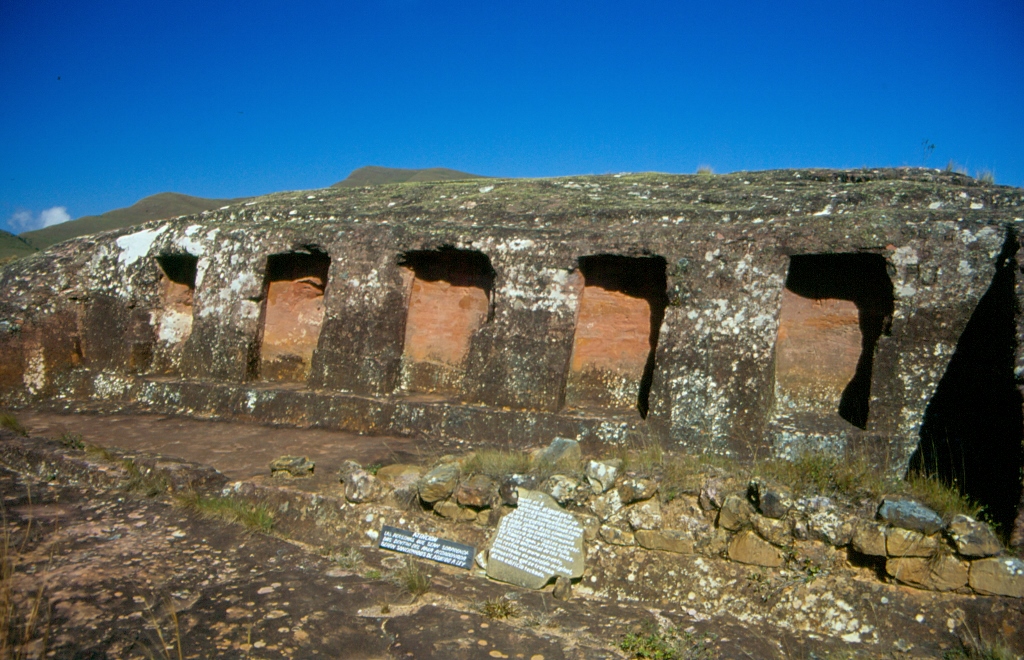 El Fuerte
El Fuerte
In the past it was allowed that visitors walked over the rock, but it was eventually prohibited partly because of different vandals that abused the privilege and partly because of the consequent erosion. Nowadays, there is a path that goes around the rock with several elevated viewpoints that have been built around. I lingered there for some time and then I leisurely returned to Samaipata.
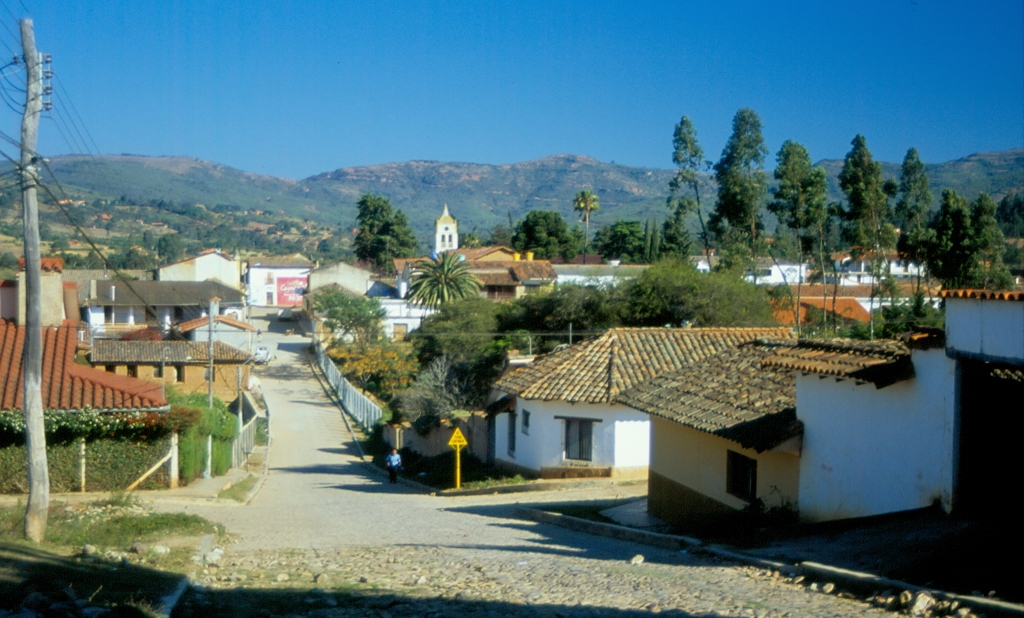 Samaipata
Samaipata
Samaipata is a small place surrounded by green hills. It is very cute and picturesque, but there is not too much on offer. I first went to an internet cafe and then to a market to buy some fruit. I also visited the museum and then went to wait for the transportation back.
At the point where one needed to wait there were no cars, but I was told just to relax and that transportation will eventually come. I was ready to take any means of transportation that would take me to Santa Cruz and there was anyway nothing else for me to do, so I just sat there and started to wait. The weather was pleasant, but I was also slightly tired. This thing with trufis was quite strange and completely uncertain: whether and when it would arrive, whether and when enough people would get together... In fact, when one relaxes it might also be seen as a good exercise for practicing patience. And so the time went by, the day was getting close to its end, I still waited for a trufi and there was nobody else but me. When it eventually did appear, I immediately offered to pay the full price in order to be taken back to Santa Cruz. And so I was.
The next day was completely relaxed. I strolled downtown, booked a hotel in Sucre for the following day, but also bought a small silver pendant with bolivianite, i.e., ametrine, that is extracted somewhere in this area. I decided to walk back home and there I found Felipe and his young apprentice. Namely, Felipe had a workshop at his home and made beautiful metal furniture with mosaics created using small pieces of ceramic tiles. I watched the two of them work and we chatted and had good time. It was most enjoyable and afterwards I sat down to make plans for the rest of my trip and see how I could distribute my time.